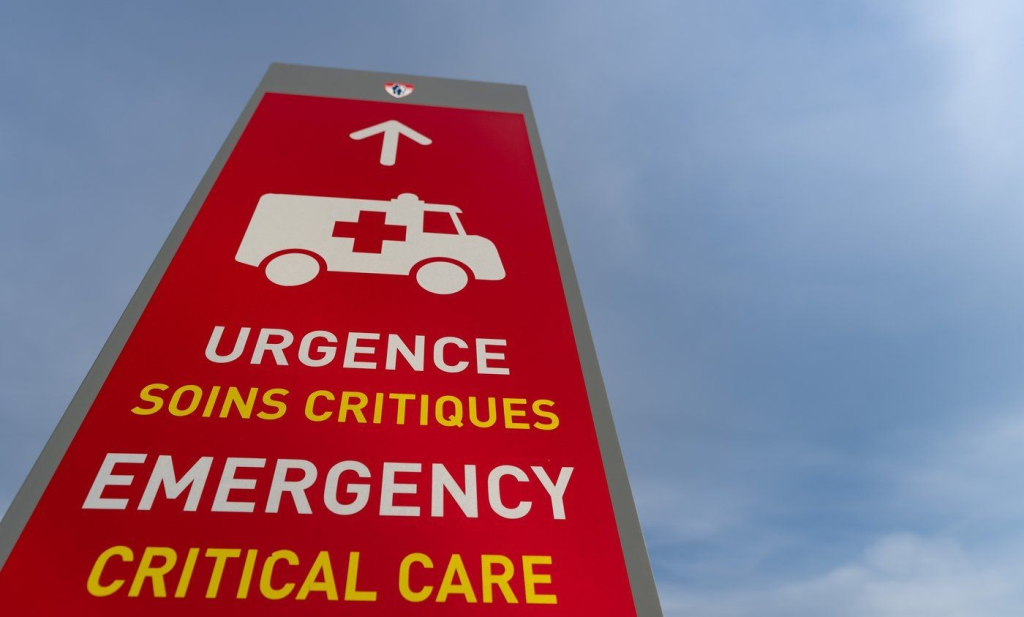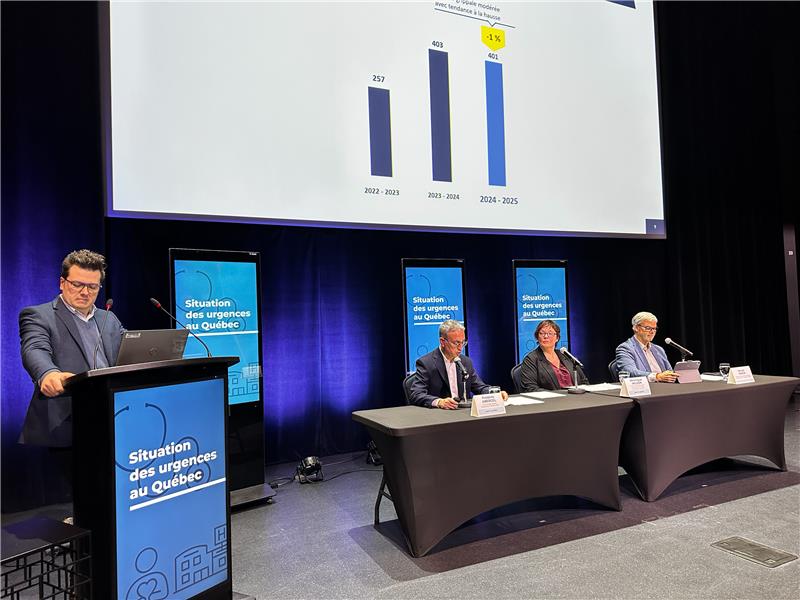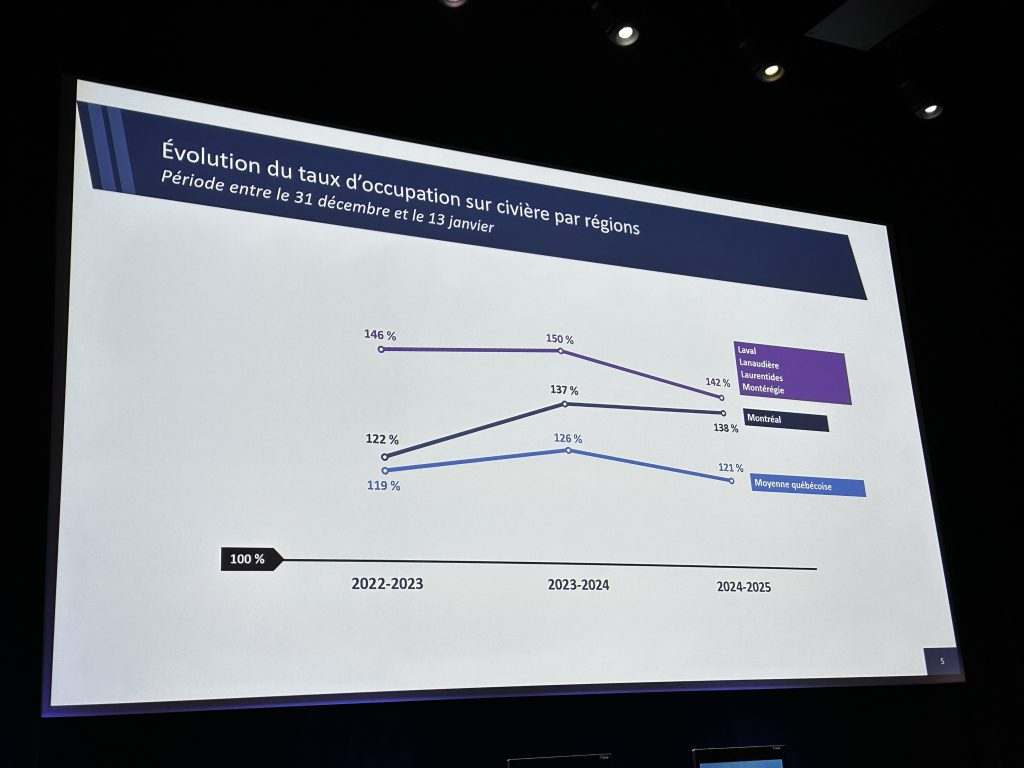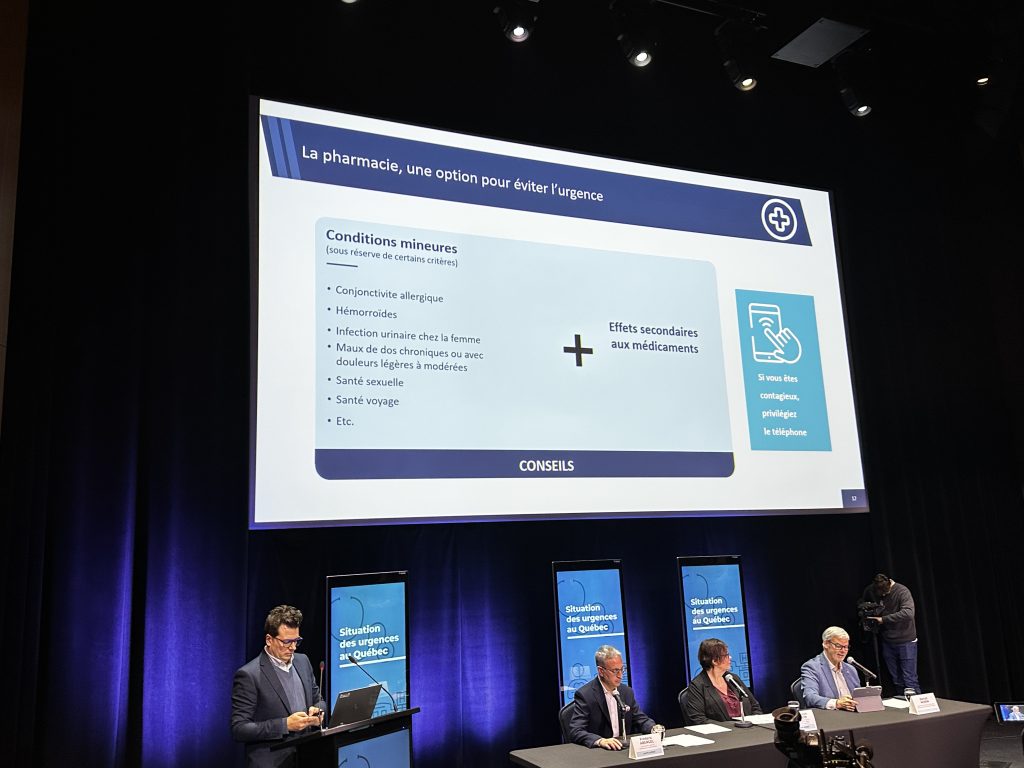Emergency rooms in Montreal remain overcrowded, Santé Québec updates situation

Posted January 17, 2025 9:36 am.
Last Updated January 17, 2025 5:48 pm.
Hospitals across Quebec continue to battle rising occupancy rates. In Montreal on Friday morning, the average stretcher occupancy in all emergency rooms was at 147 per cent.
This comes as Santé Québec, the province’s new crown corporation for the health network, held another press conference on the matter – its second one of the year.
“It’s a little bit worrisome that we almost normalize the situation where we sort of expect 120-130 per cent to be essentially normal,” said Dr. Christopher Labos, a cardiologist and epidemiologist in Montreal.

The health agency explained that between 2023-2024 and 2024-2025, the stretcher occupancy rate went from 126 per cent to 121 per cent, for the period from Dec. 31 to Jan. 13.
Adding that the average length of stay went from 20.1 hours to 18.6 hours, an improvement of 1.5 hours per patient, during the same period.
“Since the same period last year, and even compared to two years ago, we have noticed an improvement in the average length of stay of about 1 hour,” said Frédéric Abergel, Executive Vice-President of Operations and Transformation at Santé Québec.
“This hour can make a difference for patients waiting to be treated and whose condition requires an emergency stretcher,” he added.
“For sure it’s still too long,” Abergel said. “We have 1.2 million visits of patients on stretchers per year like I said before, so an improvement of the average of one and a half hour, it’s still an improvement.”
“We want to really change a few things in many institutions.”
When asked whether the increasing number of job cuts due to the $1.5 billion budget cuts imposed on the public health network will have an impact on emergency room traffic, Abergel replied that it was too early to know.
“We are really in contact every week with health care institutions to understand the measures they would like to implement. Our primary objective is to have the least impact on the services offered to the population,” he indicated.

Dr. Labos, says despite the small improvements in the occupancy rates, the issues persist in ERs.
“Most emergency rooms are still very congested they’re still very long waits, very long stays in emergency rooms,” Labos said. “We are still in a situation where things are very busy at hospitals and resources are actually stretched very thin.”
Just a week ago, the health agency, which came into effect last month, provided its first update and stated that ERs were in a better situation compared to the year before, despite added pressure during the holidays.
As of 9:30 a.m., the most strained Montreal hospitals included the Jewish General Hospital, with a stretcher occupancy rate of 234 per cent. Not far behind: the Royal Victoria Hospital, which saw 194 per cent of their stretchers occupied. The Lakeshore General Hospital on the West Island was at 181 per cent.
Flu cases are on the rise and threaten to further burden Quebec’s health care system.
The positivity rate for influenza cases has climbed to 10.9 per cent in the last week, according to the Quebec’s public health institute, the INSPQ. This is a slight increase compared to the first week of the year.
Respiratory syncytial virus (RSV) is seeing a positivity rate of 9.5 per cent, which is trending downwards, as the week before it was at 12.2 per cent.
COVID-19 positivity also slightly decreased — at 8.2 per cent in the last week, compared to 9.1 per cent over the week of Jan. 4.
On Tuesday, Quebec public health confirmed that 11 cases of measles had been reported in the Laurentians, Montreal and Laval. This is the second measles outbreak in Quebec since the beginning of 2024; the first, which lasted four months, totaled 51 cases.
Due to all the added pressure on the health network, the Association Québécoise des Pharmaciens Propriétaires (AQPP) is calling on the public to get vaccinated in pharmacies across the province.

Additionally, Benoit Morin, of the Quebec Association of Pharmacist Owners, encourages Montrealers dealing with ailments from sexual health, travel health, chronic back pain, and urinary tract infections to visit local pharmacies.
“Let pharmacists help you too you can help them helping you so if you need medication on a regular basis call in advance to let the pharmacy be prepared so they can you know work on more emergency things for people.”
—With files from The Canadian Press, first published in French and translated by CityNews








